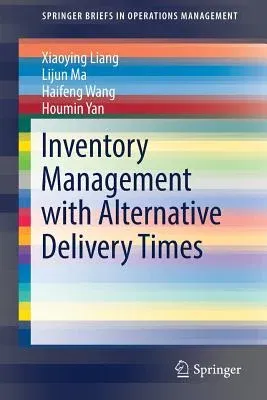Xiaoying Liang
(Author)Inventory Management with Alternative Delivery Times (2017)Paperback - 2017, 5 December 2016

Qty
1
Turbo
Ships in 2 - 3 days
In Stock
Free Delivery
Cash on Delivery
15 Days
Free Returns
Secure Checkout

Part of Series
Springerbriefs in Operations Management
Print Length
106 pages
Language
English
Publisher
Springer
Date Published
5 Dec 2016
ISBN-10
3319486330
ISBN-13
9783319486338
Description
Product Details
Book Edition:
2017
Book Format:
Paperback
Country of Origin:
NL
Date Published:
5 December 2016
Dimensions:
23.39 x
15.6 x
0.64 cm
ISBN-10:
3319486330
ISBN-13:
9783319486338
Language:
English
Location:
Cham
Pages:
106
Publisher:
Weight:
176.9 gm